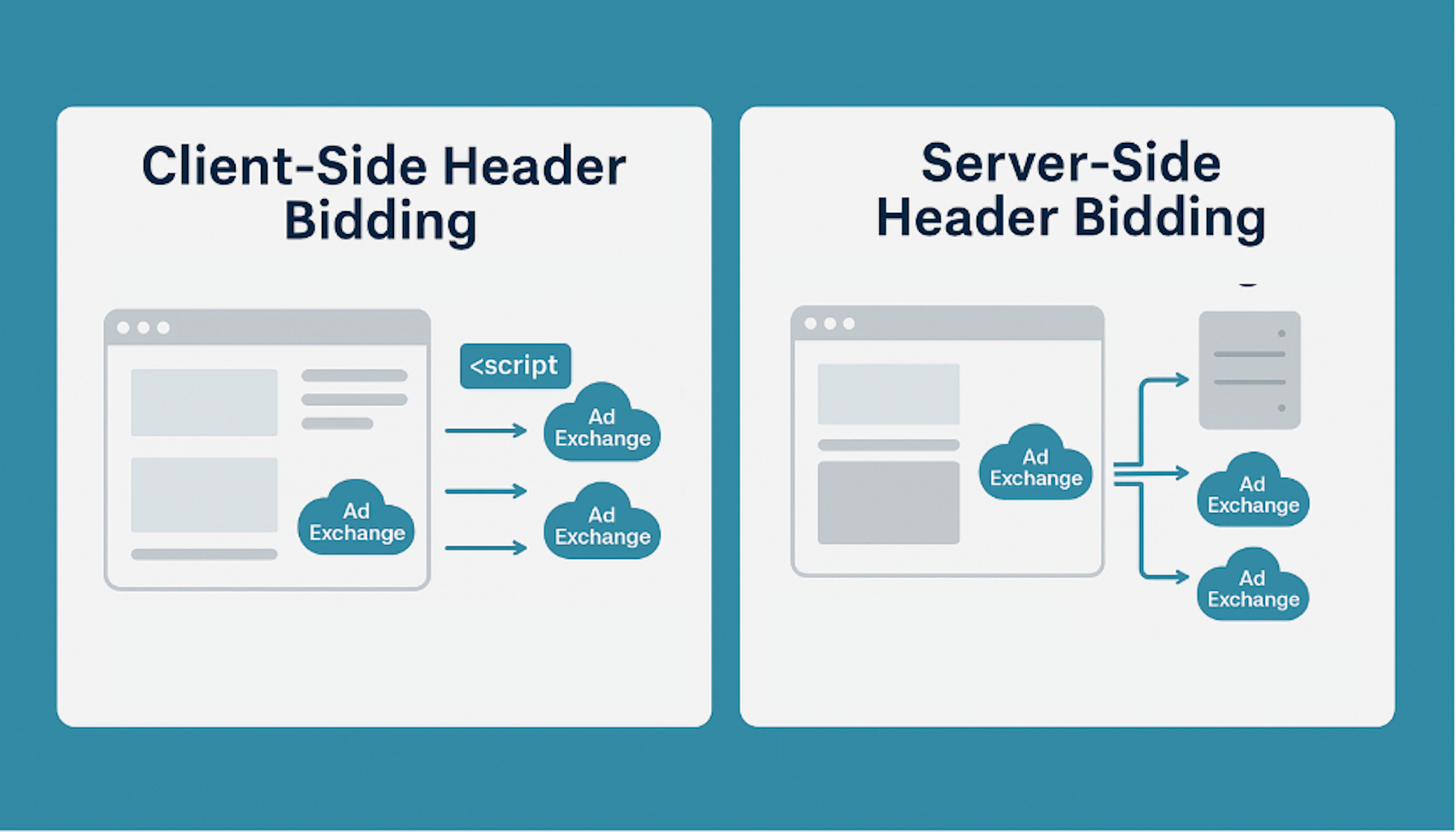
More than 70% of publishers use header bidding to boost eCPMs, increase fill rates, and maximize revenues. While client-side header bidding is an overall improvement over the waterfall, there are a few drawbacks. To address these issues, a new technology emerged: server-side header bidding. Both can be implemented by a publisher, but which best fits your monetization strategy?
Client-side header bidding
Client-side header bidding is a real-time competition between several demand sources that maximizes the number of demand partners bidding simultaneously on a publisher’s inventory. The process requires a wrapper that goes into a web page’s header, and the publisher gets to select how many demand sources to plug into the wrapper. Appnexus developed is own open-source wrapper, prebid.js.
What are the advantages of client-side header bidding?
- Boost in RPM: In this real-time demand sources competition, supply side and demand side vendors can easily synchronise their cookies during the bidding process. This improved cookie matching allows advertisers to more easily identify users and subsequently retarget them to generate additional revenue.
- More transparency: Transparency is one of the key benefits of client-side header bidding. Publishers can access granular reporting to gain deeper insights about demand sources and clearing prices.
What are the drawbacks of client-side header bidding?
- Latencies: The biggest challenge with client-side header bidding is the potential latencies that can occur during the loading of ads and pages. This is usually due to the high number of SSPs competing in the header. These latencies can result a diminished user experience.
- Complex set-up: Client-side header bidding is hard to implement, manage and optimize when you don’t have a dedicated technical team to do it. The setup requires requires implementing multiple demand sources tags (one tag per page), so it usually takes a publisher over a month to get going.
- Limited ad requests: A browser can only perform a limited number of ad requests at a time, so only about a dozen can be sent from the client-side header bidding wrapper at once.
Server-side header bidding
In server-side header bidding, the publisher chooses a server-side bidding technology partner to implement and host the solution. A single call is made from the web page to the third-party server, which then continues making calls server-side to all integrated demand sources. The wrapper sends all bids and prices back to the publisher, so pricing is extremely transparent. This is especially great for mobile, where high bandwidth is necessary to sustain the connection and ensure the ads are properly delivered. Several ad tech providers developed their own wrappers; Google has Exchange Bidding and Amazon has Amazon TAM.
What are the advantages of server-side header bidding?
- A solution for latency issues: With server-side bidding, the auction is managed on a 3rd party server. Slow loading times are much less of a problem, and user experience is improved.
- Why does it work better for Rich Media: Videos are often slow to load, so switching to server-side bidding greatly improves user experience. A server-side implementation is also the only way to show ads on Over-the-top (OTT) devices.
- Unified reporting: The publisher will save time as he will be able to monitor the performances of all its demand sources activated in a unified reporting.
- Easy set-up: Compared to client-side header bidding, the technical setup is easier; you just have to ask your server-side bidding provider to activate or deactivate your demand sources.
What are the drawbacks of server-side header bidding?
- Lack of control and transparency: Because the auctions are run on an external server, publishers and buyers are not privy to the details. There is no control over the priority ranking of demand partners and any hidden fees that may be applied are invisible.
- No cookie matching: Most data is filtered out when moved to a server, so server- side header bids do not match cookies.
How to choose the right solution?
Unfortunately, there is no perfect header bidding solution. Both client-side and server-side header bidding have pros and cons. Study the advantages and disadvantages so you can figure out which best fits your monetization strategy. Consider the type of inventory you have available, the current demand, and the up-and-coming marketing trends.
Relevant Yield
Relevant Yield is built with strong hands-on experience in running programmatic ad operations. We are an independent company and a neutral, trustable and flexible partner. Our solution is highly customisable and continuous development is based on markets and customers' needs. Relevant Yield is the most comprehensive solution on the market for ad ops and digital sales teams to maximise revenue. You will get all in one package - revenue insights, real-time analytics and remote control of prebid setups.
Read more about our solution: Relevant Yield
If you are interested in hearing more about our services, you can leave a contact request here.
